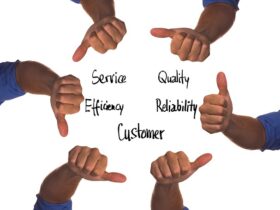In today’s world, business partnerships can be one of the most rewarding, yet complex, relationships you’ll ever navigate. Done well, it leads to synergy, success, and satisfaction for both parties. But, like any relationship, it requires intention, communication, and trust to thrive. Here, we’ll dive deep into what makes partnerships work, drawing from real-life examples and practical tips that can help you build strong, lasting partnerships.
The Importance of Trust in Business Partnerships
Trust is the backbone of any partnership. Without it, even the best intentions can fall apart. I remember starting a business with a long-time friend. We were excited, driven, and had what felt like complementary skills. Yet, we had to learn the hard way that trust in a personal relationship doesn’t always translate directly to a business one. In business, trust must be earned uniquely—it’s about consistently showing up, keeping your word, and proving reliability.
Key takeaway: Focus on building trust early. Establish clear agreements and communicate openly about expectations, responsibilities, and values.
Open Communication: The Lifeline of Every Partnership
Communication is not only about talking; it’s also about listening. I once worked with a partner who preferred a top-down communication style, while I valued collaborative discussions. We had to come to a compromise. By setting up regular check-ins and having an open line of communication, we made it work, even though we came from different angles.
Practical advice:
- Establish regular communication channels: Weekly check-ins or monthly reviews keep everyone aligned.
- Listen actively: Focus on what your partner is saying instead of planning your response.
- Address conflicts early: Small misunderstandings, if not addressed, can grow into major issues.
Define Roles and Responsibilities
One of the quickest ways a partnership can sour is when roles and responsibilities aren’t clearly defined. In my experience, when partners step on each other’s toes or have overlapping duties, it can lead to frustration. On one project, my partner and I discovered halfway through that we were both managing client communications. Not only was this inefficient, but it also created confusion for the client.
How to clarify roles:
- Create a partnership agreement that outlines specific roles, contributions, and expectations.
- Regularly review roles as the partnership grows or changes. Responsibilities may shift over time.
Having clear, distinct roles allows each person to focus on their strengths and ensures no one feels undermined or sidelined.
Shared Vision and Alignment
Imagine setting out on a road trip without deciding on a destination. That’s what it’s like when partners don’t have a shared vision. It’s crucial to agree on the big-picture goals of the partnership from the beginning. On one venture, I joined a partnership where, early on, it became evident that my partner and I had different visions of success. We realized we needed to sit down and hash out exactly what we both wanted.
Pro tip:
- Spend time discussing the mission, values, and long-term goals. Ask yourselves questions like, “What does success look like to each of us?” and “Where do we see this partnership in five years?”
Flexibility and Adaptability
Every partnership will face unforeseen challenges. Maybe the market shifts, one partner’s circumstances change, or a new competitor emerges. Adaptability is what allows a partnership to weather storms and come out stronger.
When the pandemic hit, a partner and I were forced to rethink our approach completely. We moved our business online and had to adjust our roles and services. It wasn’t easy, but because we were both flexible, we managed to pivot and even saw our business grow.
Tips for staying adaptable:
- Be open to change: Don’t let a rigid mindset hold the partnership back.
- Look for solutions, not blame: When challenges arise, focus on finding ways forward rather than on what went wrong.
Appreciation and Acknowledgment
It’s easy to get caught up in day-to-day operations and forget to acknowledge each other’s efforts. Showing appreciation builds goodwill and strengthens the bond between partners. A simple “thank you” or acknowledgment of a partner’s contribution can go a long way.
One of my most successful partnerships was with someone who would regularly recognize my contributions. It motivated me to put in even more effort. In turn, I made it a point to express my gratitude and recognize their hard work.
Actionable advice:
- Celebrate wins together: Whether it’s landing a new client or reaching a milestone, take time to acknowledge it.
- Show appreciation regularly: Don’t wait for big events—small, sincere gestures matter.
Learning and Growth Together
A great partnership is one where both parties are committed to growth—not just the growth of the business but personal and professional growth as well. Sharing insights, attending workshops, or reading books together can enhance your partnership.
I once had a partner who suggested we read a book on effective negotiation. It opened up so many useful discussions, and we ended up applying many of the concepts to our business dealings. This shared learning experience strengthened our partnership.
Ideas for learning together:
- Attend industry conferences or webinars together.
- Share valuable resources like articles, podcasts, or courses that you think your partner might benefit from.
Knowing When to End a Partnership
Not every partnership is meant to last forever, and that’s okay. Sometimes, moving on is the best decision for everyone involved. I once had a partnership that was simply no longer serving either of us. After several discussions, we realized we had different priorities and goals. By parting amicably, we were able to preserve our relationship.
Signs it might be time to end a partnership:
- Continual misalignment of goals or values.
- Lack of communication or trust.
- Constant friction affects the business or the relationship.
Ending a partnership doesn’t mean it was a failure—it just means it’s time for a new chapter.
Practical Checklist for Building Strong Partnerships
Here’s a quick checklist to help guide you as you build and maintain strong business partnerships:
- Establish trust by keeping your word and showing up consistently.
- Prioritize open communication and listen actively.
- Define clear roles and responsibilities to avoid conflicts.
- Align on vision and goals to ensure both parties are moving in the same direction.
- Stay adaptable and be willing to pivot when needed.
- Express appreciation to keep the relationship positive.
- Commit to growth and learning together to keep the partnership evolving.
- Know when it’s time to end the partnership if it’s no longer beneficial.
Building strong business partnerships isn’t just about profits—it’s about shared growth, mutual respect, and a commitment to succeed together. Whether it’s a small collaboration or a major joint venture, approaching a partnership with intention, communication, and trust is the key to making it work. With these strategies, you’ll be well on your way to creating partnerships that are as fulfilling as they are successful.

































Awesome! Its genuinely remarkable post, I have got much clear idea regarding from this post .
Nice blog here! Also your site loads up very fast! What host are you using? Can I get your affiliate link to your host? I wish my website loaded up as quickly as yours lol
I’d have to test with you here. Which isn’t something I usually do! I get pleasure from studying a publish that may make individuals think. Additionally, thanks for allowing me to comment!